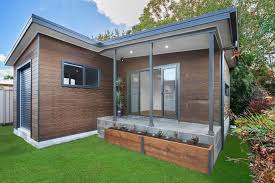Granny Flats May Raise Property Rate

A new law simplifying the process of building granny flats could come with hidden costs for homeowners, according to economists. Reported by RNZ
The government recently announced that Kiwis can soon build secondary dwellings of up to 70 square metres in their backyards without needing a building consent — a move aimed at boosting housing supply and supporting multigenerational living.
However, Infometrics economist Brad Olsen warned that the change might result in higher rates for properties that add new granny flats.
“Effectively, you would have another unit using local resources,” Olsen said. “If a property adds a granny flat, its value and rates will likely increase. Otherwise, existing ratepayers would end up subsidising those new dwellings.”
Local councils echoed similar sentiments. A spokesperson for Masterton and Carterton District Councils said that rates depend on whether a structure is “occupiable.”
“If a granny flat has a toilet, shower, and kitchen sink, it’s considered occupiable and will attract additional fixed charges for services like water, sewerage, recycling, and roading,” they said.
The South Wairarapa District Council explained that rates are determined based on whether a dwelling qualifies as a separately used or inhabitable part (SUIP) — meaning any self-contained flat that can be lived in independently will incur extra charges.
These additional costs include fixed service charges and potential increases in capital value, which affect general rates and other local levies.
Despite potential costs, Housing Minister Chris Bishop said the reform is designed to make it easier for families to build simple, affordable homes.
“Granny flats can provide flexible living options for grandparents, people with disabilities, or young adults,” Bishop said. “It’s one step toward solving New Zealand’s housing shortage.”
Building and Construction Minister Chris Penk added that the change could also boost productivity in the construction sector.
“The exemption is expected to result in around 13,000 new granny flats over the next decade,” Penk noted. “It will also reduce the paperwork burden on local councils.”
The government plans to amend the Resource Management Act by the end of the year, with the new exemption taking effect in 2026.
A new law simplifying the process of building granny flats could come with hidden costs for homeowners, according to economists. Reported by RNZ
The government recently announced that Kiwis can soon build secondary dwellings of up to 70 square metres in their backyards without needing a building...
A new law simplifying the process of building granny flats could come with hidden costs for homeowners, according to economists. Reported by RNZ
The government recently announced that Kiwis can soon build secondary dwellings of up to 70 square metres in their backyards without needing a building consent — a move aimed at boosting housing supply and supporting multigenerational living.
However, Infometrics economist Brad Olsen warned that the change might result in higher rates for properties that add new granny flats.
“Effectively, you would have another unit using local resources,” Olsen said. “If a property adds a granny flat, its value and rates will likely increase. Otherwise, existing ratepayers would end up subsidising those new dwellings.”
Local councils echoed similar sentiments. A spokesperson for Masterton and Carterton District Councils said that rates depend on whether a structure is “occupiable.”
“If a granny flat has a toilet, shower, and kitchen sink, it’s considered occupiable and will attract additional fixed charges for services like water, sewerage, recycling, and roading,” they said.
The South Wairarapa District Council explained that rates are determined based on whether a dwelling qualifies as a separately used or inhabitable part (SUIP) — meaning any self-contained flat that can be lived in independently will incur extra charges.
These additional costs include fixed service charges and potential increases in capital value, which affect general rates and other local levies.
Despite potential costs, Housing Minister Chris Bishop said the reform is designed to make it easier for families to build simple, affordable homes.
“Granny flats can provide flexible living options for grandparents, people with disabilities, or young adults,” Bishop said. “It’s one step toward solving New Zealand’s housing shortage.”
Building and Construction Minister Chris Penk added that the change could also boost productivity in the construction sector.
“The exemption is expected to result in around 13,000 new granny flats over the next decade,” Penk noted. “It will also reduce the paperwork burden on local councils.”
The government plans to amend the Resource Management Act by the end of the year, with the new exemption taking effect in 2026.











Leave a Comment